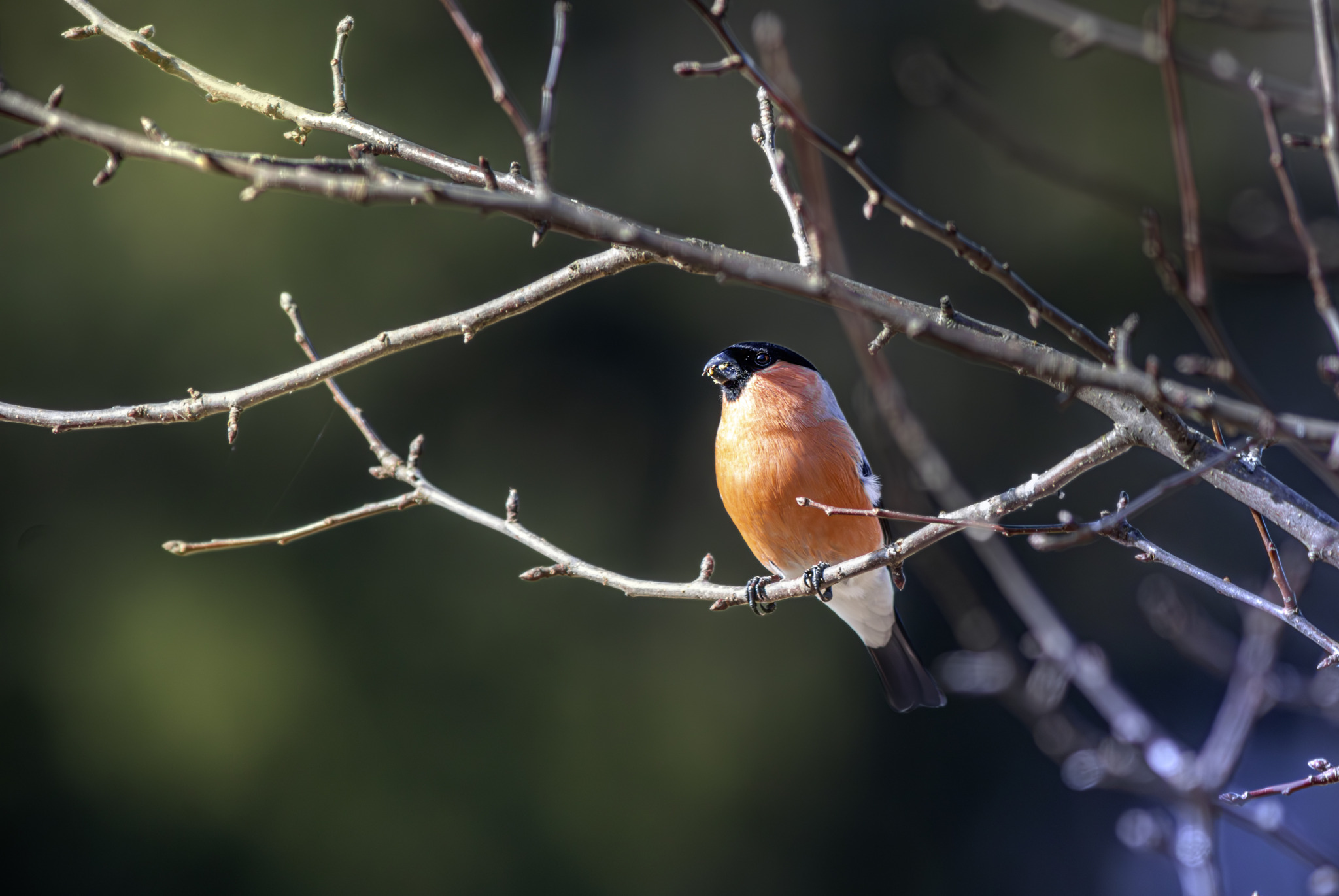The Eurasian Bullfinch (Pyrrhula pyrrhula) is a small passerine bird belonging to the finch family, Fringillidae. Here’s some information about this charming bird:
- Appearance: Eurasian Bullfinches are compact birds with a stocky build, round bodies, and short, stout bills. Adult males have striking plumage with a gray back, black cap, and bright pink-red breast and cheeks. The wings and tail are black with white markings. Females and juveniles have similar markings but with more muted colors, with the pink-red of the breast and cheeks being duller or absent.
- Habitat: Eurasian Bullfinches inhabit a variety of wooded habitats, including deciduous and mixed forests, woodlands, orchards, parks, and gardens. They are often found in areas with dense vegetation and ample food sources such as berries, seeds, and buds.
- Distribution: This species has a wide distribution across Europe, Asia, and parts of North Africa. It is found in countries such as the United Kingdom, Scandinavia, Russia, China, Japan, and the Middle East. Eurasian Bullfinches are resident birds in many parts of their range but may undertake seasonal movements or altitudinal migrations in response to changes in food availability and weather conditions.
- Diet: Eurasian Bullfinches are primarily granivorous, feeding on a variety of seeds, including those from trees such as birch, alder, and beech, as well as from shrubs like hawthorn and blackberry. They also consume buds, shoots, berries, and occasionally insects.
- Behavior: Eurasian Bullfinches are often seen foraging in trees and shrubs, where they search for seeds, buds, and other food items. They have a distinctive flight pattern characterized by undulating flight with rapid wing beats interspersed with gliding. Eurasian Bullfinches are generally shy and secretive birds, often remaining hidden in dense vegetation.
- Breeding: Breeding season for Eurasian Bullfinches typically occurs from April to July. They build cup-shaped nests made of twigs, grasses, and moss, lined with softer materials such as feathers and hair. The female lays a clutch of 4-6 eggs, which she incubates for about 12-14 days. Both parents participate in feeding and caring for the young after hatching.
- Conservation: Eurasian Bullfinches are not considered globally threatened, although populations may be declining in some regions due to habitat loss, fragmentation, and changes in land use practices. Conservation efforts aimed at preserving and restoring woodland habitats and protecting nesting sites are important for the long-term conservation of this species.
Overall, the Eurasian Bullfinch is a delightful bird known for its colorful plumage, melodic song, and presence in woodlands and gardens across its range.
Visited 923 times, 1 visit(s) today
Views: 1155
Subscribe to the newsletter:
